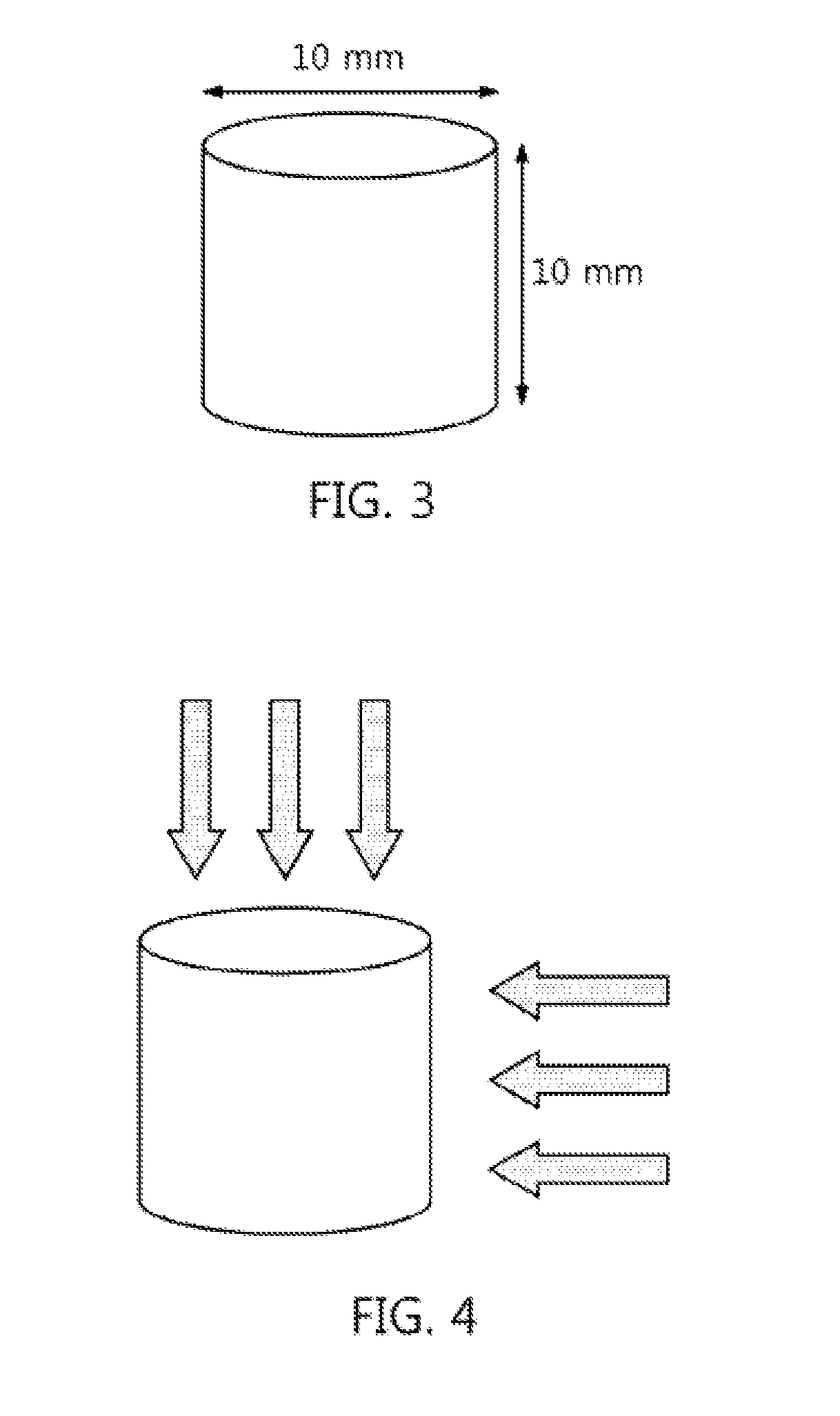Magnetite-based sintered ore and method of producing same
a sintered iron ore, magnetite technology, applied in the direction of gas emission reduction, etc., can solve the problems of inability to crack when hematite is reduced into magnetite, inability to use in iron-making process, and slow internal gas diffusion, so as to reduce carbon dioxide emission, ensure strength, and suppress the generation of fine powder
- Summary
- Abstract
- Description
- Claims
- Application Information
AI Technical Summary
Benefits of technology
Problems solved by technology
Method used
Image
Examples
example 1
Manufacture of Magnetite-Based Sintered Iron Ore Using Microwave Irradiation
[0039]3 g of magnetite ore in ultrafine powder form (about 0.2 mm or less) and having a low reducibility index was compacted (diameter: 10 mm, height: 10 mm) at a pressure of 250 MPa and heated to 1200° C. through irradiation of a 1.8 kW microwave at 2.45 GHz, thus manufacturing sintered iron ore.
[0040]Sample treatment conditions were as follows.
[0041]Sample weight: ˜3 g
[0042]Sample particle size: <0.2 mm
[0043]Compaction pressure: 250 MPa (maintained for 5 min)
[0044]Maximum temperature: 1200° C.
[0045]Heating rate: 125 to 160 ° C. / min
PUM
| Property | Measurement | Unit |
|---|---|---|
| height | aaaaa | aaaaa |
| diameter | aaaaa | aaaaa |
| compressive stress | aaaaa | aaaaa |
Abstract
Description
Claims
Application Information
 Login to View More
Login to View More - R&D
- Intellectual Property
- Life Sciences
- Materials
- Tech Scout
- Unparalleled Data Quality
- Higher Quality Content
- 60% Fewer Hallucinations
Browse by: Latest US Patents, China's latest patents, Technical Efficacy Thesaurus, Application Domain, Technology Topic, Popular Technical Reports.
© 2025 PatSnap. All rights reserved.Legal|Privacy policy|Modern Slavery Act Transparency Statement|Sitemap|About US| Contact US: help@patsnap.com


